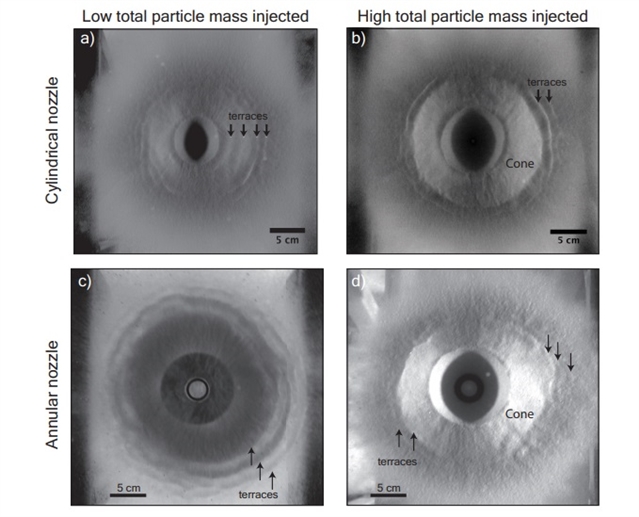
加拿大不列颠哥伦比亚大学的Gilchrist, Johan T.及美国俄勒冈大学的Hooft, Emilie E. E. 等研究发现,海底阶地沉积与形成破火山口的喷发柱的周期性坍塌有关。相关论文于2023年4月10日发表于国际顶尖学术期刊《自然—地球科学》杂志上。
研究人员对海底火山喷发形成的海底沉积物建造的、保存完好的同心阶地进行了测量模拟实验和光谱分析,以提供对控制这些火山喷发和由此产生的危害性的动力学的见解。研究表明,强大的海底火山喷发柱在坍塌状态下将物质输送到海面和海床。随着喷发强度的降低,连续波之间的时间会变得更短,这取决于连续波之间的时间,它们在海面和\或海底的冲击和传播可以诱发海啸,驱动径向火山碎屑密度流,并形成波长随着距离的增加而减小的同心阶地,或者形成单调变薄的沉积物。
而Sumisu (Izu-Bonin弧)破火山口沉积结构可以用不涉及沉积波和海面之间相互作用的陆上或深水模型来解释,而Macauley(Kermadec 弧)和Santorini(Hellenic 弧)破火山口的沉积结构则与具有广泛的沉积波-海面-海床相互作用的浅水模型相一致。研究海底破火山口形成的爆炸性喷发,使得其动力学的明确分类和阶地沉积物的喷发速率的定量估计成为可能。
研究人员表示,灾难性的火山喷发会产生危险的火山灰和火山碎屑流,在某些情况下还会引发海啸,然而,人们对其的动态变化仍知之甚少。
附:英文原文
Title: Submarine terraced deposits linked to periodic collapse of caldera-forming eruption columns
Author: Gilchrist, Johan T., Jellinek, A. Mark, Hooft, Emilie E. E., Wanket, Sean
Issue&Volume: 2023-04-10
Abstract: Catastrophic, caldera-forming explosive eruptions generate hazardous ash fall, pyroclastic density currents and, in some cases, tsunamis, yet their dynamics are still poorly understood. Here we use scaled analogue experiments and spectral analysis of well-preserved concentric terracing of seafloor deposits built by submarine caldera-forming explosive eruptions to provide insights into the dynamics governing these eruptions and the resultant hazards. We show that powerful submarine eruption columns in collapsing regimes deliver material to the sea surface and seabed in periodic annular sedimentation waves. Depending on the period between successive waves, which becomes shorter with decreasing jet strength, their impact and spread at the sea surface and/or seabed can excite tsunamis, drive radial pyroclastic density currents and build concentric terraces with a wavelength that decreases with distance, or deposits that thin monotonically. Whereas the Sumisu (Izu–Bonin arc) caldera deposit architecture is explained by either a subaerial or deep-water model involving no interaction between sedimentation waves and the sea surface, those of the Macauley (Kermadec arc) and Santorini (Hellenic arc) calderas are consistent with a shallow-water model with extensive sedimentation wave–sea surface–seabed interactions. Our findings enable an explicit classification of submarine caldera-forming explosive eruption dynamics and quantitative estimates of eruption rates from their terraced deposits.
DOI: 10.1038/s41561-023-01160-z
Source: https://www.nature.com/articles/s41561-023-01160-z
